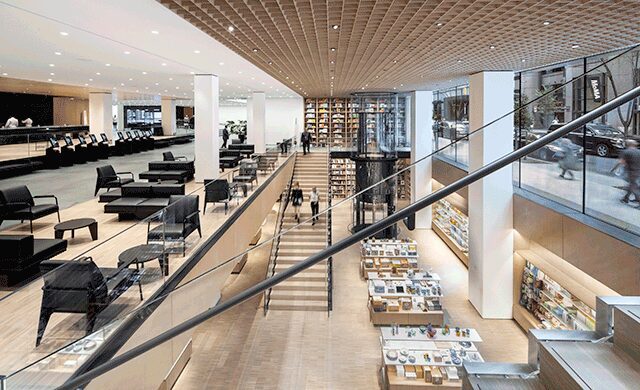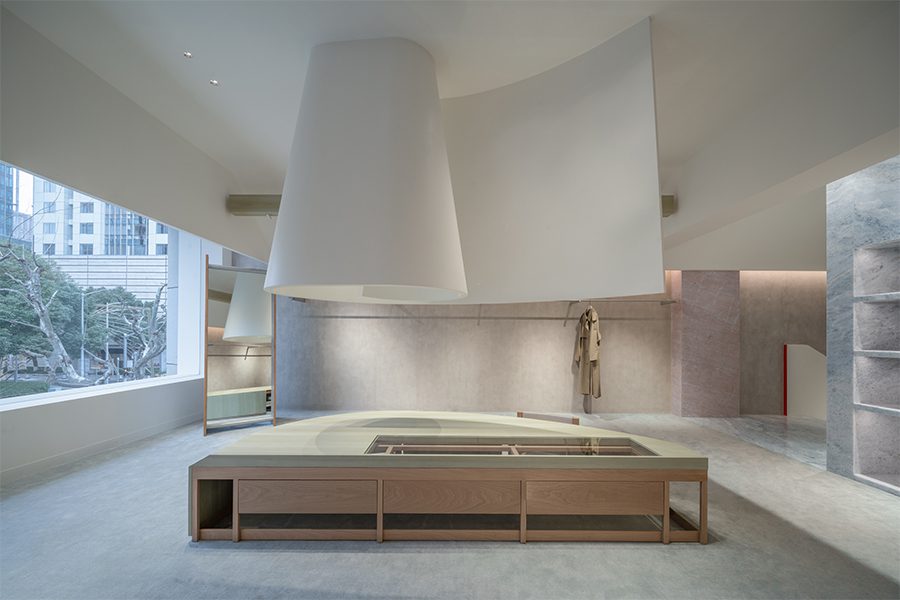These institutions challenge the status quo while bringing a progressive worldview to the forefront.
The Museum of Modern Art
New York
How does one future-proof a landmark of international cultural history like the MoMA in New York? If that person is Liz Diller of New York-based interdisciplinary design studio Diller Scofidio + Renfro, the solution is found in the name. “MoMA is a well-established institution with a great legacy that carries the weight of the history of modernism on its shoulders,” Diller says. “This effort was to help expose its vast collection in new ways that challenge the way the history of the last century was told.” The $450 million update for the Midtown Manhattan museum, a collaboration with Gensler, not only responds to the modernist vernacular of its surroundings, but also employs a minimalist eye to complement the existing fabric of the building. The sleek new David Geffen Wing grows the onsite gallery space by 30 percent, including live and experiential programming and a creativity lab, while amenities like the nearly 6,000-square-foot flagship store are located in a cellar space visible from the lobby and found down a central staircase. Human flow has also been reconsidered to alleviate foot traffic and establish more moments of surprise across MoMA’s many internal routes, all done in a palette of glass, steel, and wood veneer, and accented by a white and black color scheme. As Diller says: “One of MoMA’s major ambitions was to break from the limitations of their media-specific galleries to present a less sanitized, more complex understanding of art and its contexts.”
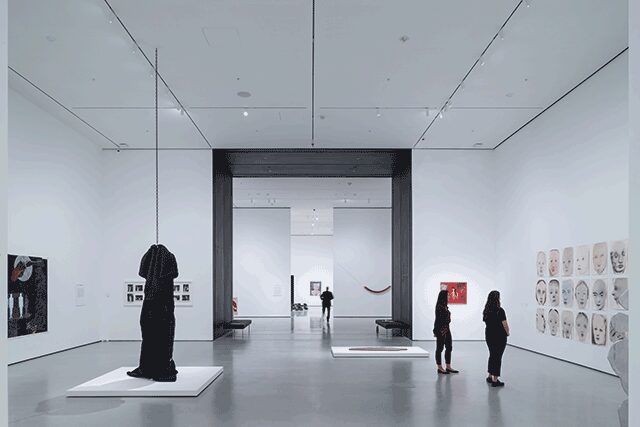
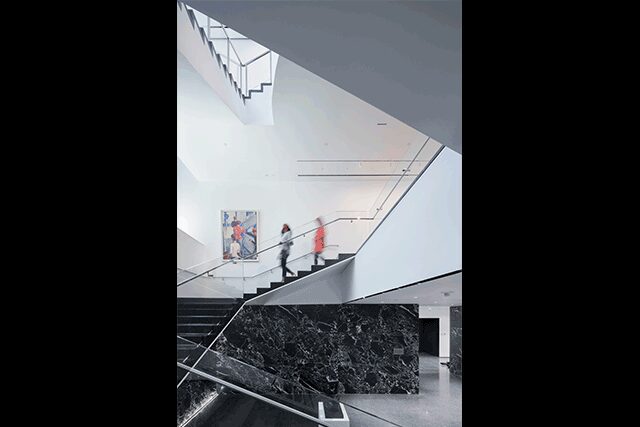
National Pulse Memorial & Museum
Orlando
For the winning concept of the National Pulse Memorial & Museum, Lille, France-based firm Coldefy & Associés remained true to onePULSE Foundation’s credo: “We will not let hate win.” To achieve this, the design firm looked to Orlando’s natural landscape. “It seemed essential that the new design was full of life,” says Zoltan Neville, Coldefy’s director of design and international development. Envisioned as an opulent garden with a protective and colorful canopy, a reflecting pool encircles the former nightclub, now integrated into the memorial, which is expected to open in 2022. In memory of the 49 victims of the shooting, 49 colors line the basin and radiate toward the 49 trees planted in the garden. Meanwhile, the spiral building that houses the museum “is inspired by the image of a budding flower, reaching toward the sky,” says Neville, and also includes public plazas and a rooftop promenade. “We have an opportunity to reclaim a place from terror and darkness and create a new reality, one that brings people together in celebration of joy and love.”
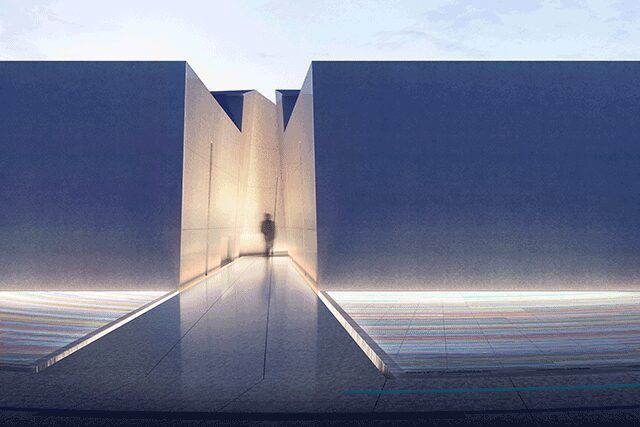
The Cartoon Museum
London
Channeling the vibrant chaos of the animated world, the Cartoon Museum in the Fitzrovia section of London hosts a 3D world where the laws of physics are defied—doors may appear too large or too small, and bookcases serve as secret portals to new discoveries. Designed by locally based practice Sam Jacob Studio, the layout draws inspiration from the frames of a cartoon strip through which visitors can choose various routes and spatial narratives that reflect a spectrum of possibility. Interiors are outfitted with graphic wall treatments reminiscent of the natural world, while neon signage, “Pow!” cutouts, and speech bubbles anchor visitors in an illustrated reality. “We drew on the language of cartoons, which often have very different kinds of places and scenes,” says the firm’s founder Sam Jacob. “We used the idea of being able to draw different types of space at different scales to bring some of that into the visitor’s experience. Sometimes you feel like you are in different locations, like a villain’s lair or a house.”
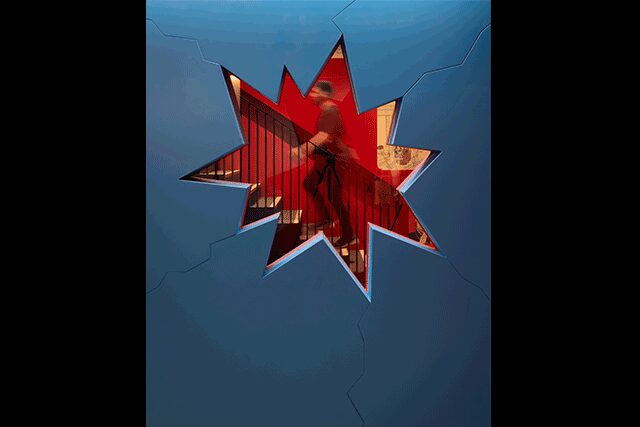
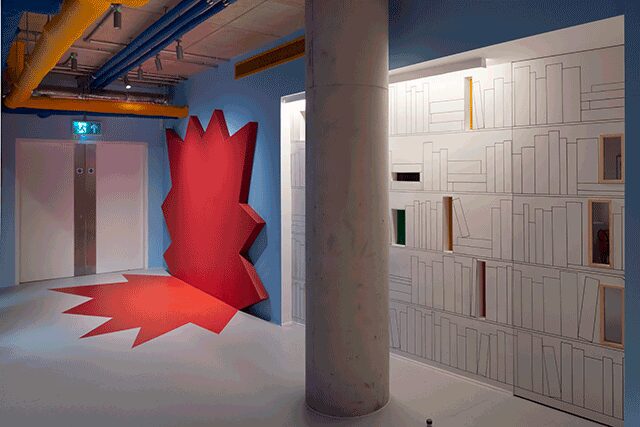


The Arc
Svalbard, Norway
Home to only a few thousand people, Longyearbyen is a small Arctic town on Svalbard, an archipelago situated between Norway’s mainland and the North Pole. Here, Oslo- and New York-based Snøhetta designed a visitors center for arctic preservation that showcases items from the world’s largest secure seed storage (the Arctic climate makes the location perfect for this), houses a collection of historical digital assets from the Arctic World Archive, and—in collaboration with the Norwegian Natural History Museum—educates visitors on the archipelago’s geology and history. Clad in glass and burnt wood, the entrance building is suspended off the ground to prevent it from heating the permafrost, while the exhibition building, as striking as its surroundings, is accessed via a glass bridge and takes a monolithic form. At the center is the ceremony auditorium, with a bright, wooden interior that contrasts the darker wood on the building’s outer shell. As a call to action in response to the climate emergency, a deciduous tree—similar to those that used to grow on Svalbard millions of years ago when the temperature was eight degrees higher than it is today—is a visual representation of the conditions the area could return to in the next 150 to 200 years if global temperatures continue to climb apace.

The Twist
Jevnaker, Norway
The aptly named Twist gallery in Jevnaker, Norway comes from the always inventive Bjarke Ingels Group (BIG). As the new fixture of the Kistefos Sculpture Park, the Twist boasts interiors clad entirely with blanched fir slats that frame sightlines across the double-height venue’s three galleries. As the linear, 10,700-square-foot structure completes its 90-degree spin, the external aluminum skin is punctured by a zipper-like stretch of glazing that illuminates the exhibition space at the heart of the building. The Twist also contains a subterranean space lined with concrete and glass that sparks a unique visual engagement with the river flowing just beneath the volume.
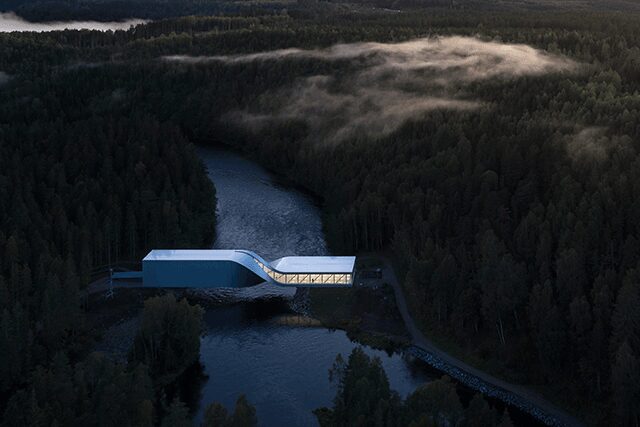
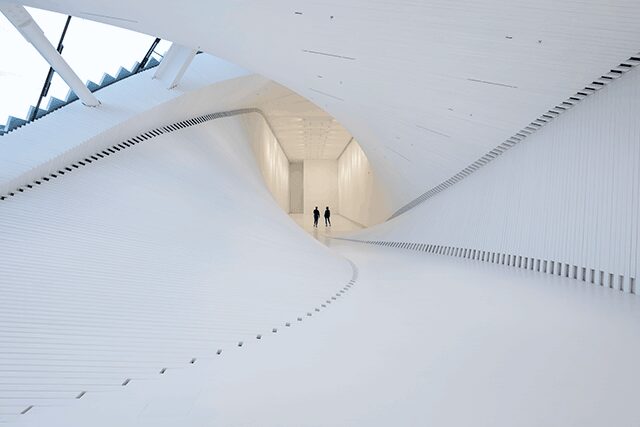
Photos by Iwan Baan, Brett Beyer, Jim Stephenson, Snøhetta and Plomp, and Laurian Ghinitoiu; renderings courtesy of Coldefy & Associés

